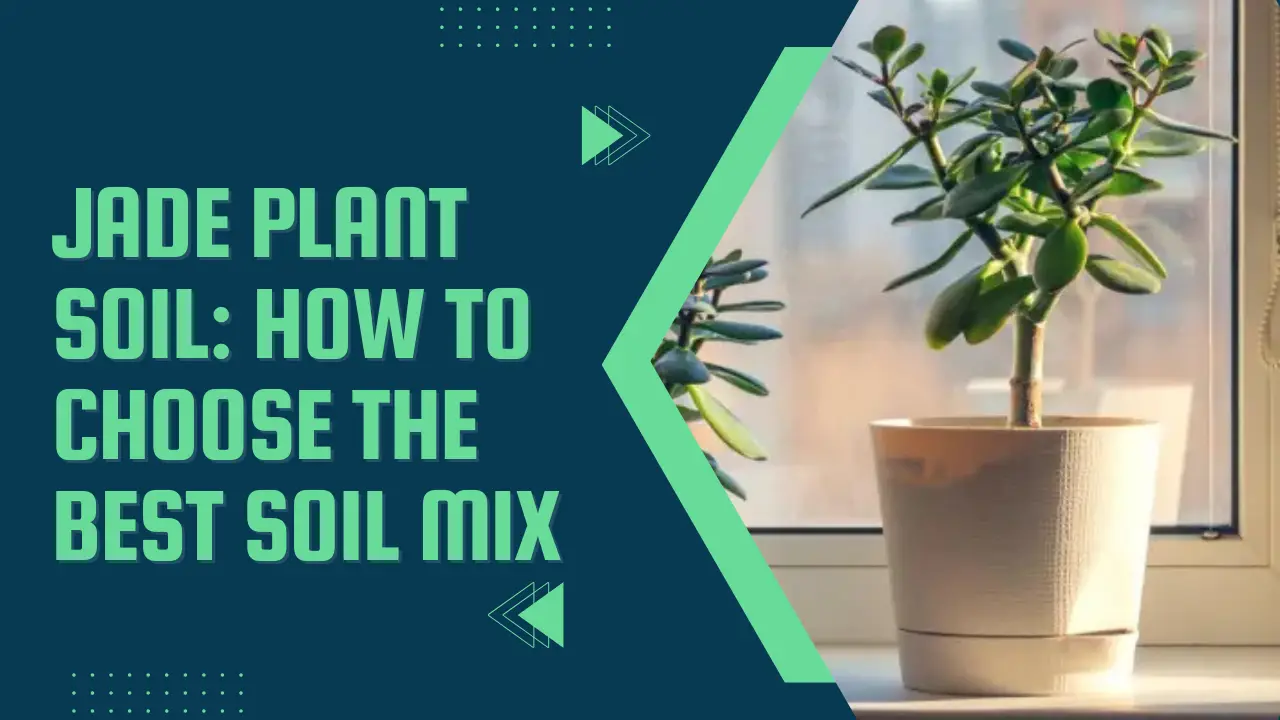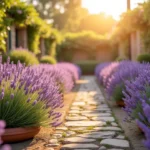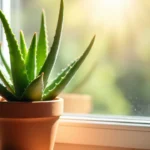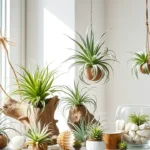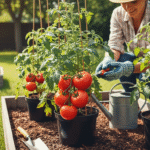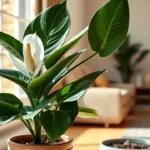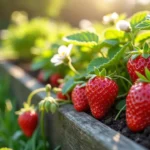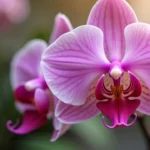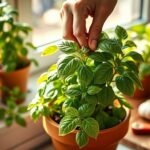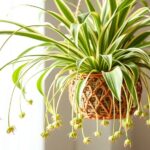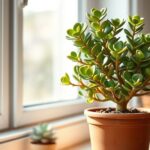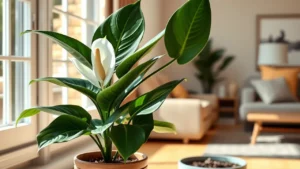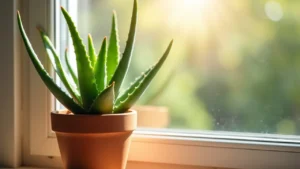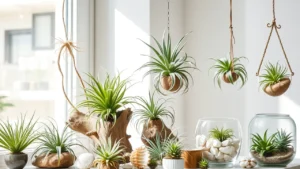Jade plants, also known as money plants, are well-known for their tiny green leaves. This succulent can brighten almost any space with its magic. It is an ideal choice for gardeners like you and me due to its long life span. You can easily pass down this green friend to the next generations.
Jade plants are non-demanding and easy to maintain. But even gardeners like you and me who are not neglecting the care of the jade plant can experience a few issues. Yellow leaves, root rotting, spongy leaves, and much more! What could be the possible reason? It all starts with the jade plant soil.
You will need the right soil for jade plant to develop. Now you must be wondering, “Which is the best soil for jade plant” or “What kinds of ingredients to use in the jade plant soil mix?” So, let me guide you through some instructions that will help you know everything about jade plant soil requirements.
But before that, let me tell you why good soil plays an important factor in the jade plant’s growth.
Table of Contents
Why is Good Soil necessary for Growth?
As you know, plants absorb the majority of the nutrients they require to survive from the soil using their root systems. These essential resources consist of water, oxygen, and nutrition. The right soil gives a plant’s roots a safe spot to adhere to the ground.
But you should know what type of soil a plant requires as each plant has slightly varied soil requirements. It will help you to provide the plant with the ideal environment for growth and development.
Most jade plant kinds can be more vulnerable to physical injury, pests and diseases, and health issues if you do not meet specific soil criteria.
Now I will walk you through the most common signs of using the wrong soil. You will learn how bad soil can affect your jade plant’s health.
Common Signs You’re Using Bad Jade Plant Soil Mix
Jade plants naturally thrive in loose, rocky soils, like other succulents. They will retain too much water if it is planted in dense soil. You can witness multiple health issues, which are:
a) Dropping leaves: If your jade plant drops more leaves than usual, it can cause concern.
b) Mushy or rotting roots: If there’s a lack of proper drainage, it can damage roots.
c) Spongy leaves: If the leaves have a squishy middle layer inside them, it can damage them.
d) Yellowing on multiple leaves: If you provide your jade with enough water and sunlight, you still witness the yellow leaves. Bad soil is the one to blame.
So, the question that might pop into your mind is, “How can I choose the best soil for jade plant?” Don’t worry, we’ve got you. Here are some of the best ways to select the right jade plant soil type.
How to Choose the Best Soil for Jade Plant?
You may have thought that all indoor plant soils perform better. But a variety of factors influence the functionality and suitability of different plants. Here are the few things you should consider while selecting the jade soil mix:
1) Well-draining
Jade plants retain water in their leaves and stems. So, they require well-draining soil when grown as indoor plants. This is the most crucial feature to look for when buying potting soil.
Because succulents are drought tolerant and retain water in their leaves, they do not require moist soil.
When jade plants are left in excessively moist soil for a long time, they are susceptible to root rot.
2) pH
Jade plants thrive in acidic soil with a pH of 6 to 6.5. Although they aren’t too picky about their soil’s pH, they may survive in slightly alkaline soil.
You can witness some issues only when the pH of the soil is extremely high or low, resulting in nutrient deficiencies. Cactus and succulent soils work well in slightly acidic soil because they are designed for plants that require fast drainage and an acidic pH level.
3) Grainy Texture
A grainy texture is required to keep the jade plant soil from becoming lumpy. Also, it will prevent clumps in the soil, which are common in sandy and rocky soil.
Jade plants have a vast root system, and with this soil mix, they are prone to leaning over. A soil mix with a grainy texture is essential for jade plants.
4) Rich in nutrients
Jade plants require a nutrient-rich soil mix to grow well, especially when you plant them in pots or containers. They thrive well in sandy soil, but it has little nutritional value.
To compensate for that deficiency, growing them with rich-nutrient soil will make them top-heavy.
5) Aerated
You must aerate your jade plant’s soil mix because they dislike being in wet soil for a long time. It is challenging for the roots to breathe if the soil remains moist, resulting in soggy soil and then root rot.
The soil mix for your jade plant should have a good balance of drainage and water holding capacity.
Which Soil is Best for the Jade Plant?
The best soil for jade plants will result in healthier and green growth. They are succulents and, as a result, store water in their leaves. They dislike being left in the water for long periods. When it retains too much water, it will eventually result in serious issues.
To avoid a variety of problems, including overwatering and root rot, you should pick the appropriate jade plant soil type.
Best Soil for Jade Plant:
Combining coarse sand and potting soil makes the optimum mixture for jade plants. Soil with iron and potassium gives ideal nutrients for better growth. You can ensure the health and beauty of the plant will increase if you amend the soil with some compost and potting mix.
Let me help you understand this in detail.
The succulent is native to South Africa. The jade plant grows on rocky and sandy soil in its natural habitat. It provides plants with very little to no nutritional value.
You can recreate its natural environment to promote growth, boosting the chance of surviving. However, using rocky and sandy soil alone is insufficient. Compared to plants with deep root systems, succulents have shallow roots. If the jade plant’s roots are exposed to moisture, they may rot and eventually perish.
You should create a perfect balance between drainage and structural stability. By combining organic stuff with coarse sand, that balance is attained.
Jade Plant Soil Note:
Avoid over-fertilizing your soil with compost or fertilizers because they could harm your jade plant.
How to Make the Best Soil for Jade Plants?
It is a good idea if you are planning to get your hands in the mud. You can easily get jade plant soil mix from any nursery or online store, but creating your own is typically less expensive.
Additionally, you will completely control the ingredients. You can measure and mix them to the precise consistency you prefer for the jade plant soil type.
It may look like a lot of workloads, but it isn’t. You may give your jade plant a well-draining and supportive growing medium with just a few essential, readily available substances.
Ingredients for Jade plant soil mix
1) Potting Soil
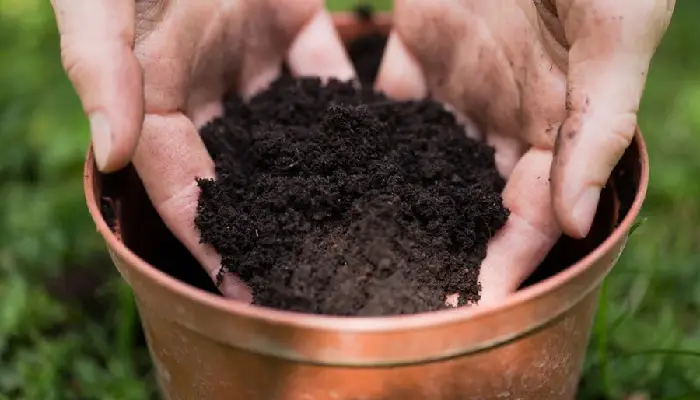
Potting soil serves as the organic foundation for your medium. You should pick something light and aerated in texture.
2) Sand
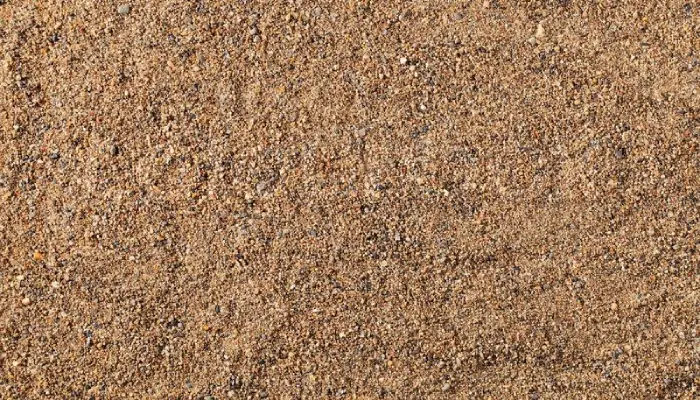
Coarse sand helps the potting mixes to improve drainage while also adding weight. Cacti and succulent mixes typically contain a higher percentage of coarse sand to ensure adequate drainage.
3) Peat Moss
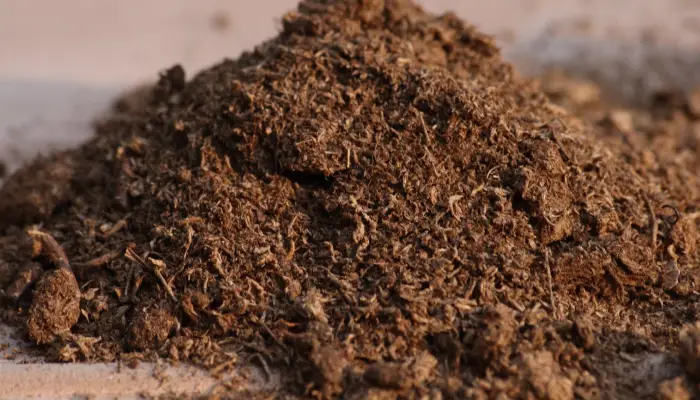
Peat moss is one of the most used ingredients in the jade plant soil mix. Peat is a relatively stable material that can take a long time to degrade. You can find it easily, and it is pocket-friendly.
It holds water well during the wet season, making it an excellent addition to potting mixes. It drains and aerates well, but its acidic pH of 3.5 to 4.5 makes it very low in available nutrients. You can use limestone to balance the mixture.
4) Limestone
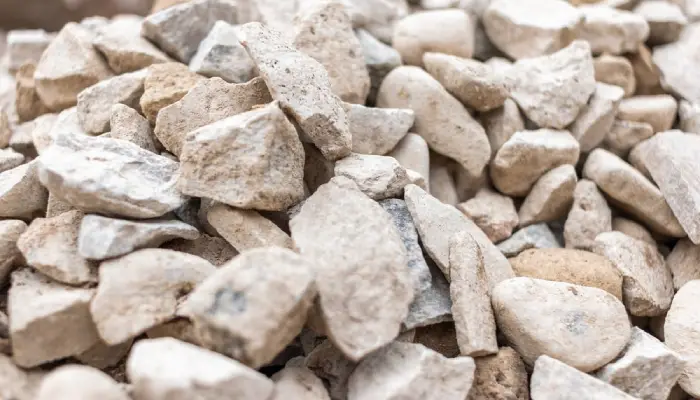
It is a sedimentary rock mainly composed of calcium carbonate. It is used to neutralize peat-based potting soil.
5) Coco coir
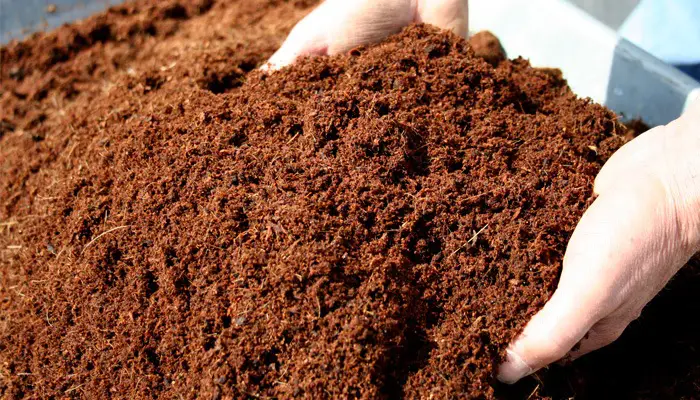
Coconut husks are used to make coco coir. It may have the same texture as peat but compacts more quickly.
6) Pine Bark
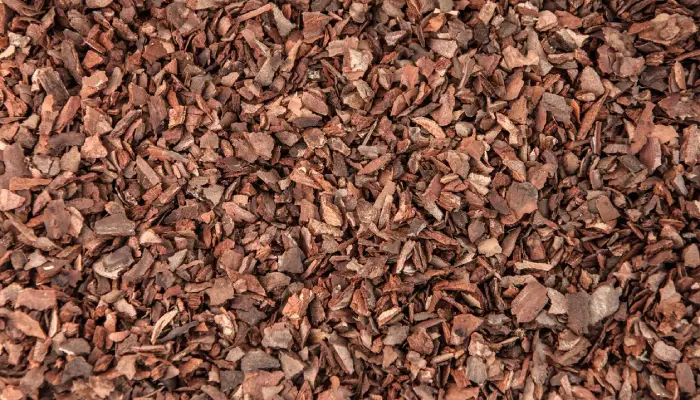
Pine bark fines are small fragments of coniferous trees like firs, pines, and spruces. Due to the bark containing a high percentage of lignin, it retains its shape over time. It is an excellent ingredient for resisting compaction and creating air pockets.
7) Pertile
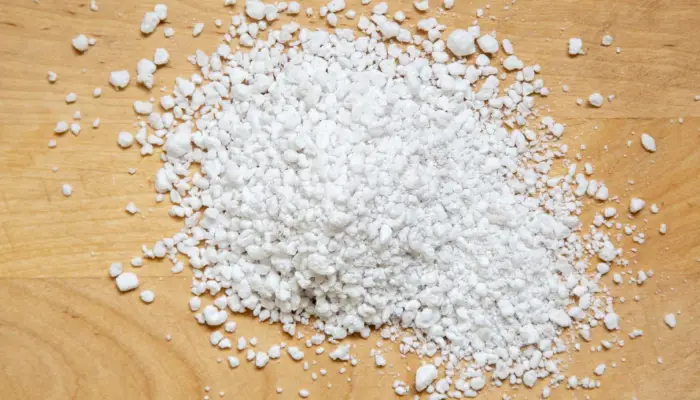
Perlite is a volcanic rock that expands when heated, resembling tiny, white Styrofoam balls. It is very lightweight, and you can add it to your mix. It holds three to four times its weight in water and increases pore space, allowing for better drainage.
8) Fertilizer
Peat-based potting soils require fertilizer because they lack the nutrients for healthy plant growth. You should use organic fertilizer for better development.
Now that you know what each component contributes to a potting mix, here’s a great recipe to try. This jade plant soil type provides excellent aeration and drainage while holding enough water for your plant to absorb.
Now in what quantities do you need these ingredients for jade plant soil?
- Well-draining potting mix (2 parts)
- Coarse sand (2 parts)
- Perlite or coco coir or pine bark fines or peat moss (1 part)
Instructions to Make Jade Plant Soil Mix
- Combine the potting mix (2 parts) with coarse sand (2 parts). After mixing well, add perlite, coco coir, pine bark fines, or peat moss (1 part).
Jade plant soil mix: If you use peat moss, you should add little limestone to the mixture. It will help to neutralize the mixture.
Conclusion
You can enjoy the attractive green succulents for a very long time by providing the best soil for a jade plant. Remember that the jade plant soil requirements are good drainage and plenty of aeration for their roots.
They prefer a slightly acidic soil mix. Give your jade plant the right amount of sunlight, water, and soil, and watch how it grows into a much bigger plant. In the comments, I would love to know which ingredients you are using for the jade plant soil mix.
Frequently Asked Questions
Q1. Does the jade plant prefer acidic soil?
Jade plants can thrive in slightly acidic soil mixtures. They prefer a wide range of pH conditions, from 5.5 to 7.0.
Even though 6.0 is the ideal pH for your jade plant, any level within this range will help it grow at its best. However, the jade plant may not have enough nutrients if the soil pH is very low or high. It could lead to scorching leaves turning yellow and eventually withering away.
Q2. Can I use cactus soil for jade plants?
Succulent jade plants retain water in their stem and leaves. Because of this, they require a light soil mixture, and cactus soil is a perfect blend for them.
Jade adores this mixture and grows healthily. You can add organic matter to the cactus soil to increase its fertility.
Q3. How can I avoid too dry jade plant soil mix?
Soil moisture is one of the most crucial elements in developing healthy plants. Root rot and fungal infections are only two issues that might result from excessive moisture. The leaves may curl and dry out if the soil is too wet, resulting in more problems.
Jade plants cannot withstand such conditions and tend to become leggy and weak. You should provide your jade plant with adequate water, and it will serve you with cute leaves. However, too much water can result in bacterial and fungal illnesses.
Gardeners should keep an eye on their soil to ensure the plants have access to the proper water. You can also use moisture meters to calculate the moisture content of your soil.
Q4. Can I use regular potting mix in the jade plant?
You can grow the majority of the indoor plants in a potting mix, but other species, like succulents, have their preference. Jade plants require unique combinations since they have distinct soil needs.
Soil for jade plant contains peat moss, coco coir, pine bark, and perlite for better water retention. Water drainage is the most crucial consideration when creating your succulent potting mix.
Q5. Do jade plants prefer sand?
Yes, jade plants adore sand. It helps the soil to drain more quickly, which is beneficial for jade plants. You should use coarse sand rather than too fine.
Q6. Can I use peat moss in the jade plant soil mix?
Peat moss generally doesn’t work well for jade plants in the long run as it retains too much moisture. You should add fertilizer and limestone to balance the mixture.
You should use the right ingredients for soil. Selecting the proper soil for jade plant will help you avoid problems and increase your chances of success.
Q7. Why should I use well-draining jade plant soil?
Jade plants require well-draining soil primarily to avoid having too much water pooled around their roots. The plant will soak itself in too much water if the medium doesn’t drain properly. It may cause the jade plant’s roots to rot and die.
Make sure your jade plant pot or container has a drainage hole. Using compost for jade plants can hamper their growth. It is too dense for the jade plant. But as long as you add something like coarse sand or perlite, you can use it.

